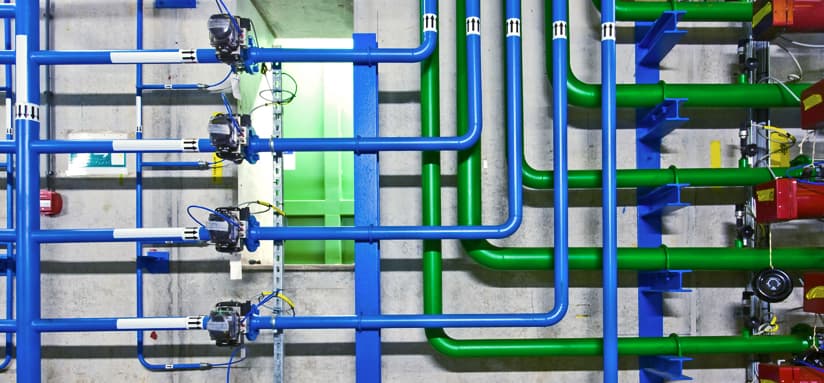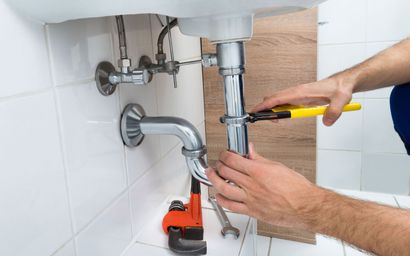The Complete Look at Your Home's Plumbing System Anatomy
The Complete Look at Your Home's Plumbing System Anatomy
Blog Article
The article author is making several great points on the subject of Understanding Your Home's Plumbing Anatomy as a whole in this great article following next.

Understanding exactly how your home's pipes system works is essential for each homeowner. From providing tidy water for alcohol consumption, cooking, and showering to safely eliminating wastewater, a properly maintained plumbing system is important for your family members's health and convenience. In this comprehensive guide, we'll check out the detailed network that makes up your home's plumbing and offer ideas on maintenance, upgrades, and managing usual concerns.
Introduction
Your home's plumbing system is more than simply a network of pipes; it's a complicated system that guarantees you have accessibility to tidy water and efficient wastewater removal. Understanding its elements and how they work together can assist you stop pricey repairs and ensure whatever runs efficiently.
Fundamental Components of a Plumbing System
Pipelines and Tubes
At the heart of your plumbing system are the pipelines and tubes that lug water throughout your home. These can be constructed from various materials such as copper, PVC, or PEX, each with its advantages in terms of toughness and cost-effectiveness.
Components: Sinks, Toilets, Showers, and so on.
Fixtures like sinks, bathrooms, showers, and bath tubs are where water is made use of in your house. Recognizing how these fixtures connect to the pipes system aids in diagnosing problems and planning upgrades.
Shutoffs and Shut-off Factors
Shutoffs manage the flow of water in your plumbing system. Shut-off valves are important during emergency situations or when you require to make repair services, permitting you to separate parts of the system without interrupting water flow to the entire house.
Water Supply System
Main Water Line
The major water line attaches your home to the local water system or a personal well. It's where water enters your home and is distributed to numerous components.
Water Meter and Pressure Regulator
The water meter actions your water use, while a pressure regulator makes certain that water moves at a secure pressure throughout your home's plumbing system, protecting against damages to pipes and components.
Cold Water vs. Hot Water Lines
Recognizing the distinction in between cold water lines, which provide water directly from the major, and hot water lines, which bring warmed water from the hot water heater, helps in repairing and planning for upgrades.
Water drainage System
Drain Pipes Pipes and Traps
Drain pipes lug wastewater far from sinks, showers, and toilets to the sewage system or sewage-disposal tank. Traps stop sewer gases from entering your home and likewise catch debris that can trigger obstructions.
Ventilation Pipelines
Ventilation pipelines permit air into the drain system, preventing suction that can slow down drain and trigger catches to vacant. Correct air flow is necessary for maintaining the stability of your plumbing system.
Relevance of Appropriate Drainage
Making certain appropriate water drainage avoids back-ups and water damage. Routinely cleaning drains and keeping traps can prevent pricey repair work and extend the life of your pipes system.
Water Heater
Sorts Of Water Heaters
Water heaters can be tankless or conventional tank-style. Tankless heaters heat water on demand, while containers save warmed water for instant usage.
Updating Your Plumbing System
Factors for Upgrading
Updating to water-efficient components or changing old pipelines can boost water high quality, decrease water costs, and enhance the value of your home.
Modern Pipes Technologies and Their Benefits
Check out innovations like smart leak detectors, water-saving commodes, and energy-efficient hot water heater that can conserve money and lower environmental influence.
Cost Factors To Consider and ROI
Calculate the upfront expenses versus lasting savings when taking into consideration plumbing upgrades. Lots of upgrades spend for themselves with reduced energy expenses and fewer repairs.
Just How Water Heaters Attach to the Plumbing System
Recognizing just how hot water heater connect to both the cold water supply and warm water distribution lines helps in detecting problems like inadequate warm water or leaks.
Maintenance Tips for Water Heaters
Frequently flushing your hot water heater to get rid of debris, examining the temperature settings, and checking for leaks can prolong its life-span and boost power effectiveness.
Typical Plumbing Problems
Leaks and Their Causes
Leaks can occur due to aging pipelines, loosened fittings, or high water pressure. Resolving leakages without delay protects against water damages and mold growth.
Clogs and Obstructions
Clogs in drains pipes and commodes are commonly triggered by purging non-flushable products or an accumulation of grease and hair. Using drainpipe screens and being mindful of what drops your drains pipes can protect against obstructions.
Indications of Plumbing Troubles to Look For
Low water stress, sluggish drains pipes, foul odors, or uncommonly high water bills are indicators of prospective plumbing troubles that ought to be addressed quickly.
Pipes Upkeep Tips
Regular Examinations and Checks
Arrange annual pipes evaluations to catch concerns early. Try to find signs of leakages, corrosion, or mineral build-up in faucets and showerheads.
Do It Yourself Maintenance Tasks
Simple jobs like cleansing faucet aerators, looking for toilet leakages utilizing color tablets, or shielding exposed pipelines in cold environments can avoid major pipes problems.
When to Call an Expert Plumbing Technician
Know when a pipes problem calls for specialist experience. Attempting intricate repair work without correct knowledge can bring about more damages and higher repair service costs.
Tips for Minimizing Water Use
Easy routines like taking care of leakages promptly, taking shorter showers, and running full tons of washing and dishes can preserve water and lower your utility expenses.
Eco-Friendly Pipes Options
Consider sustainable pipes products like bamboo for flooring, which is durable and green, or recycled glass for countertops.
Emergency Readiness
Actions to Take During a Plumbing Emergency
Know where your shut-off valves are located and exactly how to switch off the supply of water in case of a burst pipeline or significant leakage.
Relevance of Having Emergency Situation Contacts Useful
Keep get in touch with info for neighborhood plumbings or emergency situation solutions readily available for quick response during a plumbing crisis.
Ecological Influence and Conservation
Water-Saving Fixtures and Appliances
Installing low-flow faucets, showerheads, and toilets can considerably reduce water usage without sacrificing performance.
Do It Yourself Emergency Situation Fixes (When Applicable).
Temporary fixes like making use of air duct tape to spot a dripping pipe or putting a container under a leaking faucet can decrease damages till an expert plumbing technician shows up.
Final thought.
Comprehending the anatomy of your home's pipes system encourages you to preserve it successfully, saving time and money on repairs. By adhering to normal upkeep routines and staying educated concerning contemporary plumbing technologies, you can guarantee your pipes system runs effectively for many years to find.
Understanding Your Home Plumbing System: A Comprehensive Guide
Plumbing System: The Lifeline of Your Home
At its core, the plumbing system is designed to perform two primary functions: bring fresh water into your home and remove wastewater. The system is a network of pipes, fixtures, and other components that transport water and sewage. Residential plumbing systems include potable water supply lines, drain-waste-vent (DWV) systems, and various plumbing fixtures that make water use in daily tasks possible.
Key Components:
Water Supply: This part of your plumbing system brings municipal water into your home, passing through the main water supply line. It s responsible for supplying all water needs, from drinking to bathing.
Drainage System: It carries waste and water away from your home to the sewer or septic system. This system includes all the piping within your home that leads to external sewage or septic systems.
Vent System: An essential yet often overlooked component, the vent system allows sewer gases to escape and lets air into the drainpipes, ensuring water and waste move correctly through the system.
Fixture: More Than Just Taps and Toilets
Plumbing fixtures are the most interactive parts of the plumbing system, including faucets, showers, toilets, and sinks. Each fixture is connected to the plumbing system and plays a role in either the delivery of freshwater or the disposal of waste and wastewater.
Types of Fixtures:
Faucets and Sinks: Used for washing hands, dishes, and other daily water needs. Toilets: Dispose of human waste through the sewage system. Bathtubs and Showers: Provide bathing facilities, requiring both hot and cold water supply. Water Supply: The Source of Life
The water supply system is a critical component, ensuring that potable water is available throughout your home for various uses, including drinking, cooking, and cleaning. This system consists of pipes that distribute water to different parts of the house, controlled by valves to regulate the water flow.
Types of Plumbing: Materials and Methods
Various types of plumbing systems and materials are used in residential settings, each with its advantages and applications. From copper and PVC pipes for water supply to cast iron and ABS for drainage, the choice of materials can impact the longevity and efficiency of your plumbing system.
https://intownplumbingtx.com/articles/home-plumbing-system-guide/

I'm just very fascinated with Understanding Your Home's Plumbing Anatomy and I'm hoping you appreciated my entry. Sharing is caring. Helping others is fun. Thank you so much for going through it.
Click Here Report this page